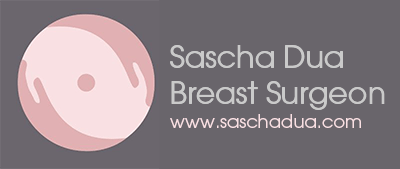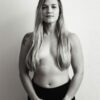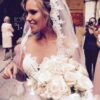Oh I love this weighty question.
In short no, I don’t work for Victoria’s Secret and I am not a bra fitter.
The long answer is a bit more complicated. Lots of surgeons will stop at that and say that they can take off enough to alleviate your back ache, give you a more upright uplifted profile, and can even tell you roughly how many grammes they might remove.
What I can tell you, however, is that an experienced intuitive breast reduction surgeon will take a while developing a rapport with a patient to try and get to know them. These are the things going through my head when a lady says “I’m not really sure I want to be lifted and yes I want to be a bit smaller but ultimately want a size that will suit me”
- How tall are you, what’s your general build? Are you five ten and broad and athletic with a straight waist? If so, reducing your heavy breasts too much might take away any feminine breast shape, and render you feeling a little androgynous. If that’s what you are going for – great! If not, then let’s leave you with a little more fullness?
- Are you a lady on a weight loss journey? If so – you know what? Maybe put off your surgery – Get closer to where you are headed. Another stone to go? OK let’s pencil you in the diary but you’ll feel much more satisfied waiting until you’re at or closer your goal weight.
- Are you asking me for a breast reduction? Or are you really only asking me for a lift? I can do both, but as part of the assessment phase, I really REALLY want to know how much you want to lose this breast weight. Or are you wanting the sagging breast repositioned and tightened up? Is it just that you want your breasts back on your chest?
- Other things, your age, your family situation – are you planning on having more babies anytime soon? If so, maybe complete your family first – allow any more droppage to occur and I’ll tidy everything up afterwards. I DO do younger women of course. Just to improve their symptoms and cosmesis.
- Ethnicity – women of colour tend towards a type of scarring called keloid scarring. So, I look for evidence of keloid or poor scarring.
- Psychological assessment. I am supported in clinic by breast care nurses, so we expect patients to be nervous when they see us, but we usually put them at ease and pretty soon stress turns into excitement! But if we see signs of body dysmorphia, or psychological issues that may be adversely affected by surgery, we advise the patient that now may not be the right time and signpost them tpa therapist if psychological input is required.
- Most women have come to me having already done EXTENSIVE homework. They know where the scars are going to be, they may have seen my results on a friend or on social media. But every set of breasts is different, even each breast in one pair is different to the other!2
- The ultimate question is…. If towards the middle of the operation, I stand back and look at my work, and in my head, I see your face and remember our lengthy chats, the question going through my head is “does she want to be smaller than this or retain a bit of fullness”
And this is only something that a LOT of conversation and judgement can guide me on.
This is why there are no further consultation bills after the first appointment once we have met. The most important thing… is that we get to know each other and that you decide that you are in the hands of someone you can trust.








